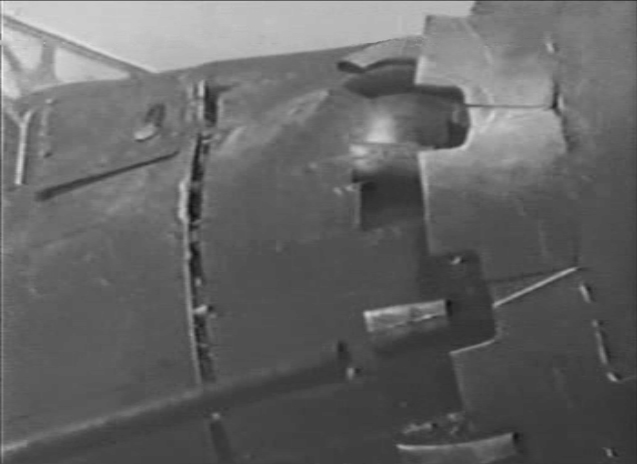From the beginning of the Second Sino-Japanese War in 1937 but especially from the second year, the Japanese Navy land based air units suffered from numerous attacks by Chinese bombers. The Type 96 Carrier Fighter or Mitsubishi A5M “Claude” was not fast enough to intercept the Soviet SB bombers of the Chinese Air Force and this created the need for a specialised land-based interceptor fighter. Requests by the 12Ku and the YokosukaKu detailed a fighter with less attention to manoeuvrability but definitely on speed. The Navy Aviation HQ started the first discussions with Mitsubishi in the Autumn of 1938 breaking apart from the previous time and resource consuming process of holding competitive trials between different company test aircraft. Nakajima was already focusing their attention on Army fighters so chief Mitsubishi designer Horikoshi Jiro was summoned in the Navy HQs on September 12, 1939 and received an unofficial order for a 14-shi interceptor.
At that time Horikoshi had to choose between two engines, either the air-cooled Mitsubishi 13-shi He-Go kai (later Kasei) or the liquid-cooled Aichi 13-shi Ho-Go (later Atsuta). After making performance estimations and taking into account that high performance fighters of other countries like the British Supermarine Spitfire and the German Messerschmitt Bf 109 were using inline engines, Horikoshi was leaning towards the liquid-cooled engine option. That was until April 22, 1940 when the Navy finally gave the official order for a single-seat, single-wing interceptor fighter requiring specifically an air-cooled engine to be installed. Maximum speed was to be at least 600km/h at 6,000m, it would have to take only 5min and half to reach that altitude, landing speed of 130km/h or less, maximum landing distance of 600m and take-off distance 300m, more than 0.7hours flight time at 6,000m at full speed, fixed pitch prop and an armament of two 7.7mm machine guns with 500bullets, two 20mm cannons with 60bullets and provision for two 30kg bombs. The Navy conceded that the handling characteristics could be less than perfect but in general they would be happier with a smaller size aircraft and for the first time asked for an 8mm armour plate behind the pilot. Horikoshi and his team opted for the large but powerful Kasei13 engine and the design of the aircraft evolved around the size of that engine with numerous meetings and long-hour discussions about techniques to reduce drag, increase the performance and for ease of production. At the same time the Mitsubishi team was quite busy working on the modified “Zero-sen” models so the first prototype was belatedly completed in February 1942 receiving the official designation J2M1.
The very first company tests were on February 27-28, 1942 and the first flight on March 20, 1942 at Kasumigaura, with Mitsubishi test pilot Shima Katsuzo in the cockpit. From April 1st the first prototype was flown to Suzuka for further company tests while from the end of May flight tests were taken over by the IJNAF with Navy pilots Kofukuda and Lt Subo, followed by pilots Lt Hoashi, from YokosukaKu LtCdr Hanamoto and others. Although stability and controls were found satisfactory maximum speed and climbing time, the most important requirements were not. Furthermore, all pilots complained about poor forward visibility, found the aircraft difficult to land while problems arose with the landing gear retracting mechanism and the propeller.
Sources for all the above information are the Japanese publications presented in the bibliography and credit should be given to Japanese aviation historians and researchers Akimoto Minoru and Watanabe Yoji. Careful readers will notice various differences with the main English source “Japanese Aircraft of the Pacific War” by René J Francillon, Putnam (aka “the bible of Japanese WWII airplanes”).
There are a number of problems regarding the J2M1. First of all, unfortunately no photos have surfaced of the very first prototype. Second, there are no official Mitsubishi documents mentioning the exact number of prototypes. Horikoshi in his book “Zero-sen”, Nihon Shupan Kyodo 1953, mentions that only three prototypes were completed, prototype #1, #2 and #4; as strange as this statement may sound. Nevertheless there are three high quality photos of J2M1 prototype #6 as indicated by the tail marking and the data plate. Apart from very early publications apparently when the photos of prototype #6 had not yet surfaced, all Japanese researchers agree that eight J2M1 prototypes were completed in total.
And finally since there are no known photos of the other prototypes it is unknown if they were in any way different.
AFAIK there are no known kits of the J2M1. Modifying any J2M2 might present a serious challenge with the need to elongate the fuselage and most importantly creating a new canopy.
The artwork below by our friend Devlin Chouinard shows J2M1 prototype #6 completed on July 3, 1942.
Note the 3-blade prop, the single collective exhaust and the cockpit looking more like belonging to a racing plane than a military aircraft. Overall colour is hairyokushoku, same as the Zero (please don't ask here details about the shade, hue etc used in the artwork). Tail marking could either be yellow (MM) or blue (FAOW, MA). No yellow IFF stripes. Spinner could be either hairyokushoku or unpainted. Important detail: all hinomaru without white suround.
J2M1 DATA:
Engine - Kasei 13 air-cooled, twin row radial 14 cylinder, (1st gear) 1,400hp @ 2,700m, (2nd gear) 1,260hp @ 6,100m, climbing output: 1,430hp
Propeller - Sumitomo VDM, metal, 3-blade, fixed pitch, diameter: 3.20m
Dimensions - Span: 10.795m, Length: 9.90m, Height: 3.82m, Main wing area: 20.95sqm
Weights: Empty: 2,191kg, Fully equipped: 2,861kg,
Fuel: 710ℓ, Wing load: 143kg/sqm
Performance - Max speed: 578km/h @ 6,000m, Service ceiling: 11,000m

















































